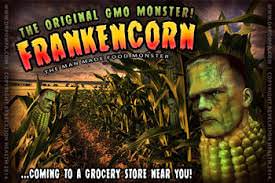I’m putting Frankenstein as the culmination of my roundup of Halloween e-reading because of its place, in my mind, as the quintessential horror story, which both inaugurated the modern genre and encapsulates modern experience. It is the horror story, or story, of our time.
For one thing, Frankenstein summed up the dilemma of the prevalent literary and cultural movement of the time: Romanticism. Abandoning Enlightenment rationalist Deism, Romanticism valorized the individual will, whether the egotistical sublime will of the artist (Caspar David Friedrich: “the artist’s feeling is his law”), or the political will of a Napoleon or other nationalist dictator. Or the rational will of the scientist, who has evolved from an Newtonian figure patiently elucidating the laws of God’s Creation, to a kind of magus spontaneously in touch with the mysterious forces of Nature – a mystic figure increasingly ready to use his will to reshape Creation itself. Mary Shelley first envisaged Frankenstein, whose framing narrative takes place in the Polar ice with one scientist recounting his experiences to another, during the “Year without a Summer” of 1816, which could almost make the novel an early example of cli-fi. And you couldn’t have wished for more Romantic surroundings than the Swiss Alps in that unnatural gloom, which resembles and probably inspired the Polar setting of Frankenstein’s exposition, just one year after Napoleon, in another Promethean or Miltonian fall, met his Waterloo.
Frankenstein also created the modern horror story by emancipating it from the myths and superstitions – and religion – of the past. Frankenstein could as easily have been subtitled A Modern Faustus, rather than A Modern Prometheus, but whereas Faust sought knowledge forbidden by God through sorcery and was damned for his crime, Frankenstein seeks knowledge through rational scientific enquiry, and suffers for his hubris. “Supremely frightful would be the effect of any human endeavour to mock the stupendous mechanism of the Creator of the world,” wrote Mary Shelley in her 1831 introduction to the book, and she refers to Milton’s Paradise Lost and other Christian tropes throughout, but God and the workings of Christian sin and punishment are conspicuously absent from the tale.
So is the supernatural. During that legendary compositional workshop at the Villa Diodati by Lake Geneva in Switzerland, the two most popular modern horror sub-genres were conceived: the vampire story, with John Polidori‘s The Vampyre, and the Frankenstein tale – encompassing every mad-scientist story thereafter. But Polidori’s story was based on a well-worn supernatural legend: Frankenstein brought something entirely new to the (dissecting) table. Mary Shelley may also have been partly inspired by her own tragic premature delivery of Shelley’s child the year before, which might have helped make Frankenstein the founding example of body horror.
Frankenstein speaks to us now most of all, though, because we are surrounded by Frankensteins and their monsters, eating Frankencorn, hacking our genome, threatening nuclear or climatic annihilation with the miscarriages and abortions of our intellect. And all the time, neurology and computer science alike imply that our rational wills are phantoms, illusions, rather than sublime sovereign spirits – resembling Frankenstein’s soulless philosophical zombie. Our modern Frankenstein’s monsters are AIs, offspring of our rational intellects with more powerful rational wills than our own; self-obsessed self-improving Oscar Pistoriuses, or Pol Pots recreating the world from Year Zero. We aspire to create Supermen, and engender the Holocaust. Man without God may have done pretty badly at making himself a god, or creating new life, but he has been peculiarly adept at creating monsters.


































